

Mo villagers escort the throne of King Cao Quyet from the communal house to Xa Vun shrine.
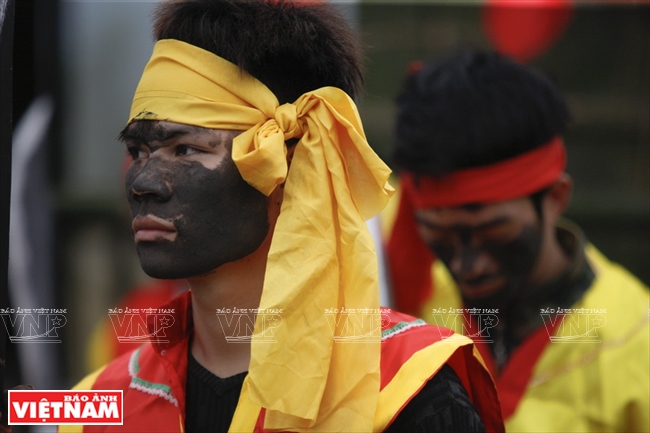
Young men joining the procession have their faces smeared with soot.
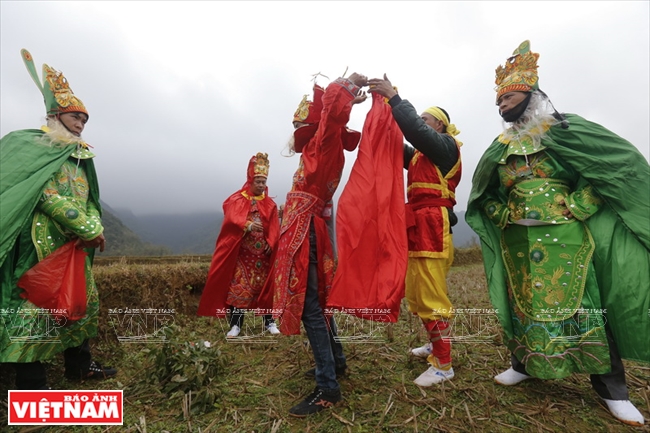
The four men selected to represent the general and his assistant generals prepare their costumes before the ceremony...
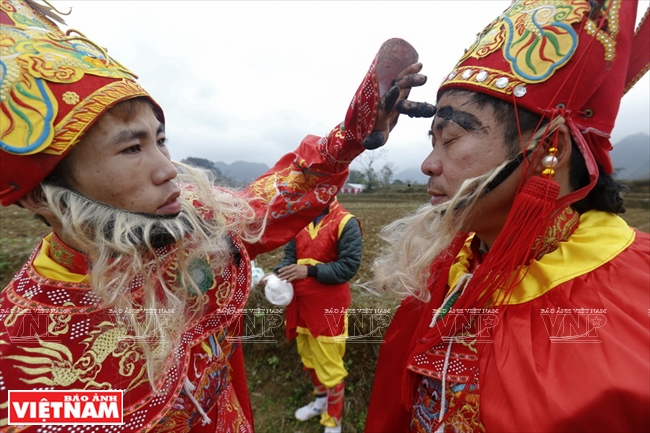
… they must come from families which are not in mourning, and must neither have sex
nor drink liquor for two weeks before and after the festival.

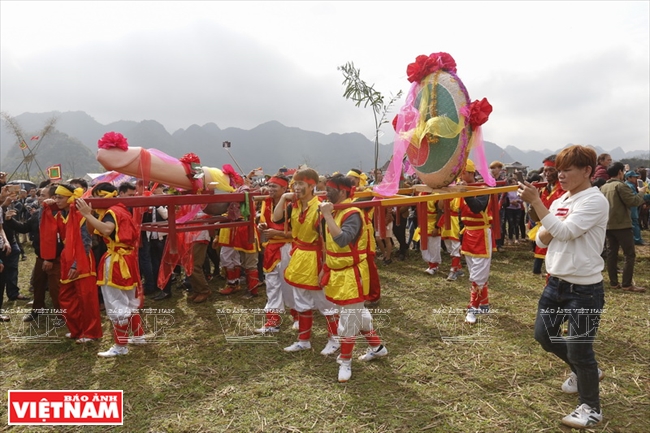
The procession of linga and yoni stops in the middle of the field for festival attendants to see the symbols of fertility.
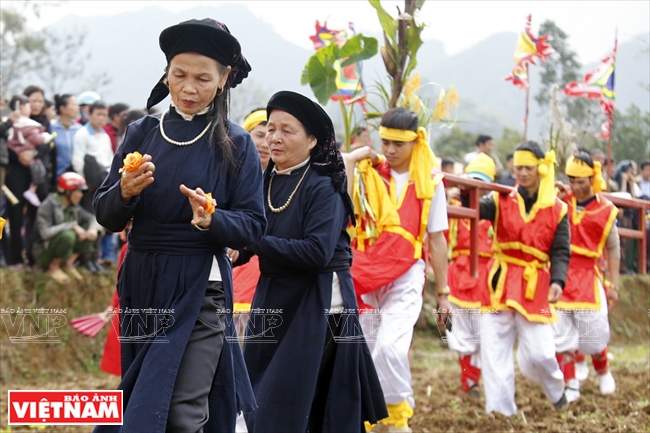
Women from Mo village perform the tinkling bell dance in the processions.
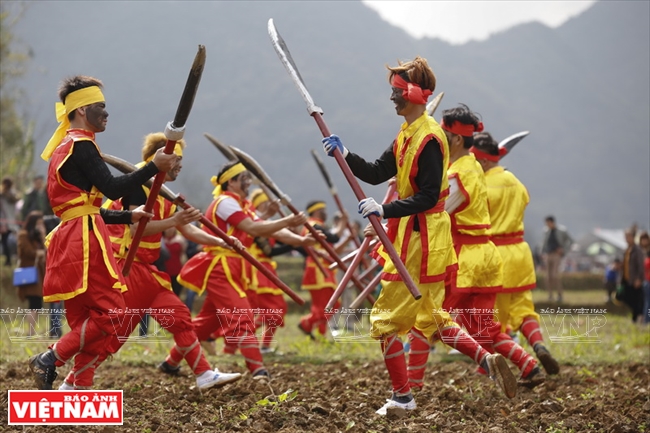
Young men in the procession from time to time stop to perform a mock fight.

Na Nhem is the biggest festival of the Tay in Mo village.
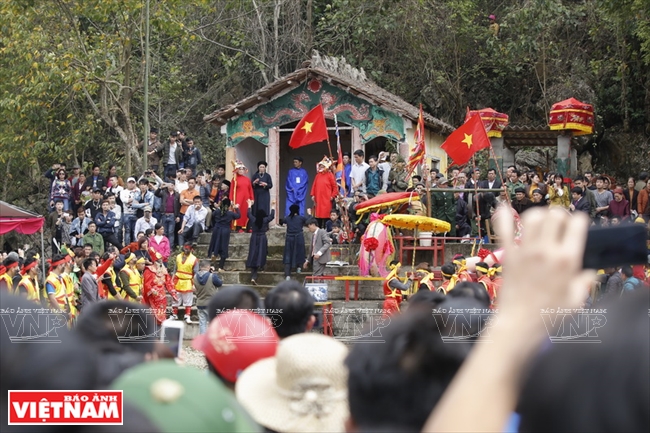
After the offerings are brought to Xa Vun shrine, a ceremony is held to pray for the deities' support
for a year of peace and prosperity.
|